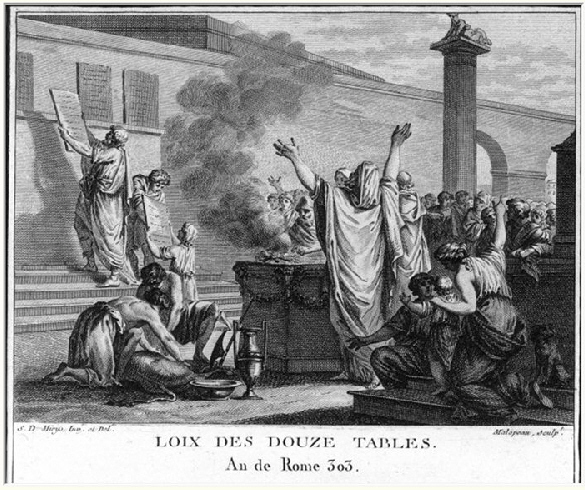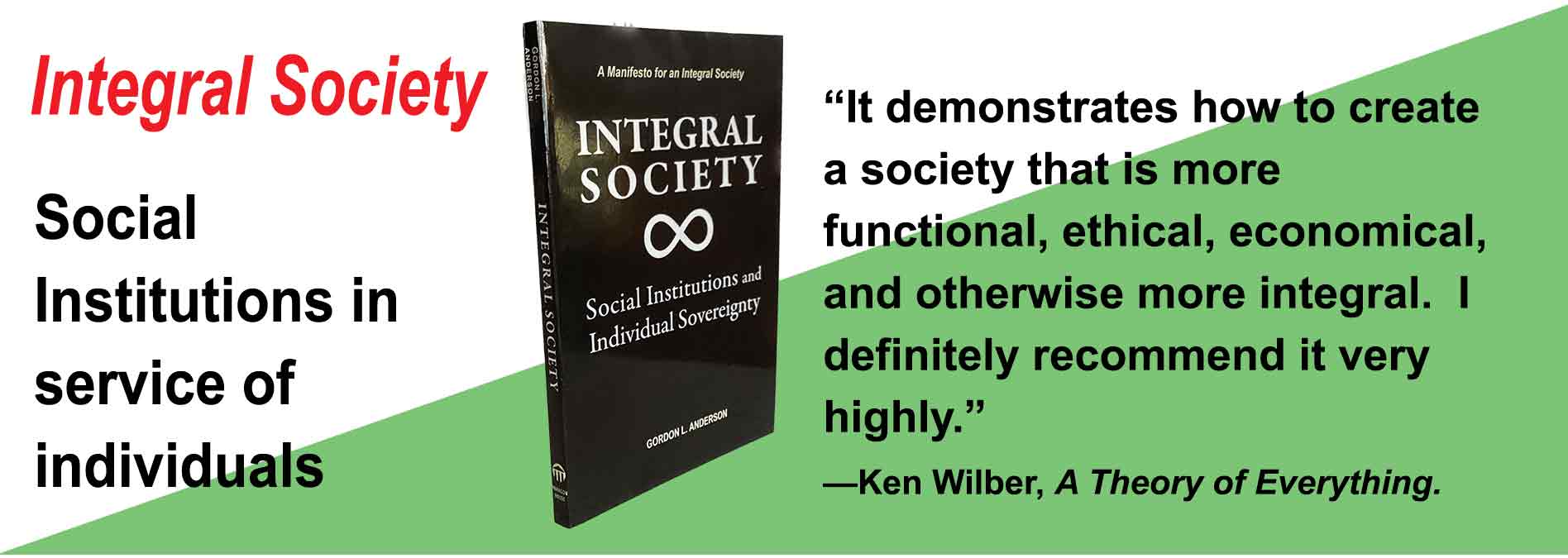In his 1776 book,The Decline and Fall of the Roman Empire, historian Edward Gibbon wrote:
If a man were called to fix the period in the history of the world during which the condition of the human race was the most happy and prosperous, he would, without hesitation, name that which elapsed from the death of Domitian to the accession of Commodus.1Edward Gibbon, The Decline and Fall of the Roman Empire, abridged by D. M. Low (New York: Harcourt, Brace, 1960), p. 1.
The Roman Republic, the predecessor to the Roman Empire, represents and an advance over previous empires in three ways. First, its foundation was not conquest but the voluntary joining together of tribal societies by a social contract. Secondly, its initial legal system, the twelve tables, was based on a serious effort to develop a better form of government based on the historical study of previous legal systems. Third, the cultivation of self-reliant, responsible, and sacrificial individuals through epicureanism and stoicism

This period of which Gibbon wrote would be 90-180 a.d. The size, wealth, and infrastructure of the Roman Empire during this period was not repeated until modern times. Gibbon wrote his magisterial work before the American Revolution. He specifically mentioned “most happy,” and “most prosperous.” These terms relate to the cultural and economic aspects of society.
The rulers of the period of peace and stability in the Roman Empire are known as what Gibbon called “the Five Good Emperors.” These were Nerva (reigned 96–98 ce), Trajan (98–117), Hadrian (117–138), Antoninus Pius (138–161), and Marcus Aurelius (161–180).2“Five Good Emperors,” Encyclopedia Brittanica.https://www.britannica.com/topic/Five-Good-Emperors.
The Distribution of Power
The Roman Senate
Early Rome was organized by a confederation of clans or households of Greek cultural origin. They chose a king, Romulus, who organized a Senate of 100 leaders, representatives of the tribes, who would elect future kings, serve as a council to the king, and act as a legislative body. The Roman Senate, formed in 753 b.c. both represented the will of the citizens and served as a check on the absolute power of the king. While many times it became weak and corrupt, the Romans Senate is one of the longest-lasting political institutions in human history. It lasted over two thousand years, continuing in the Eastern Empire in Byzantium until the 14th century a.d.
While Roman kings engaged in the conquest of neighboring lands and were not immune to corruption or palace intrigues, the Senate provided a measure of stability to the political system with a check on the power of the kings. Lucius Tarquinius Superbus, Rome’s seventh king severely abused his power, put to death many Senators, and caused his wife’s suicide. His nephew, Lucius Junius Brutus drove him out of Rome, was given the title of 1st Consul, and is given some credit for the founding of the Roman Republic in 509 b.c.
The Tribunate
While the Roman Senate represented elite families and landholders of early Rome, the patricians, Rome increasingly depended on a growing general working population, the plebeians, to build its infrastructure and fight in its armies. Fifteen years after the expulsion of Lucius Tarquinius Superbus, in 494 b.c., the plebeians were fed up working for a government without representation. They staged a general strike and, on the brink of a revolt, the patricians and plebeians negotiated an agreement, where a tribune representing the plebeians could attend Senate meetings and veto legislation. The agreement also forbid patricians from laying a hand on the plebeians, whose protection of life from bodily harm became sacrosanct.
The tribunate did not have any legislative power, like the House of Commons in the U.K., or the House of Representatives in the U.S., today. However, their power of veto gave the people protection from the passage of laws that would oppress commoners.
The Twelve Tables
The plebeians, concerned to protect their rights and representation, insisted on laws being written down in a code. The code, known as the Twelve Tables was was produced by 10 appointed commissioners, who consulted Greek laws and articulated a legal code approved by both the plebeian and patrician classes. The Twelve Tables thus became a social contract. They were a constitution that elaborated a system of governance that included distribution of power, rights, property ownership, and judicial procedures. They were not imposed by a sovereign, but voluntarily adopted by a consensus of the population after historical research and collaboration.
Slavery
Both Plebeians and Patricians were full Roman citizens. However, as the Republic/Empire developed as much as a third of the Roman population became made up of slaves. People became slaves in many ways: they were captured in war, foreigners seeking a path to Roman citizenship, indentured servants working off a debt, or children sold by their parents. Owners of slaves would not be punished for putting their slaves to death, but stoicism and the teachings of virtue and honor often led to slaves being treated humanely. Owners honored agreements made for indentured servitude. Some slaves in wealthy households lived better lives than citizens in among the lower classes. Slavery had nothing to do with race or color.
The Emperors
The late Roman Republic degenerated and failed to maintain its governance system. In his book, Mortal Republic: How Rome Fell Into Tyranny historian Edward Watts explained how the republic, with a population once devoted to national service and personal honor, was torn apart by complaints of wealth inequality, political violence, and pandering politicians. 3Mortal Republic: How Rome Fell Into Tyranny https://www.smithsonianmag.com/history/lessons-decline-democracy-from-ruined-roman-republic-180970711/
They eventually turned to the perceived stability of an emperor backed by military power rather than risk the anarchy of an unstable and degenerate republic.
The emperors, with power more like the kings of ancient empires, were in a position to improve the society with competent and moral leadership or destroy it with poor and selfish leadership. There were several examples of both, with the Five Good Emperors standing out with leadership skill and self-discipline. One reason for the success of the Roman Republic was its leadership by self-sufficient households. The decline occurred when a fewer percentage of the people were self-sufficient and looked for the system to support them. The citizens wanted Emperors who ruled to be capable and virtuous, but these qualities had to be cultivated, and the people suffered when leaders did not have them?
Stoicism, a philosophy that prized these qualities, became important for leaders in Imperial Rome. The philosophy originated in the third century b.c.e in Athens. Cicero, who lived during the decline of the Roman Republic, promoted stoicism. He taught that virtue, the highest good, is based on knowledge and that the wise live in harmony with the divine Reason, and untempted by money or defeated by suffering. The complete works by Stoics that we have inherited come from Imperial times, Seneca (4 b.c.e.–65 c.e.), Epictetus (c. 55–135) and Marcus Aurelius (121–180).
Five of the Stoic rules promoted by Marcus Aurelius were: (1) Get along with other people, (2) Be hardworking and conscientious, (3), Don’t seek praise or flatter others, (4) Don’t be afraid of criticism, and (5) Be content with the simple things in life.4Donald J. Robertson, “Marcus Aurelius on Stoicism and Leadership,”Medium. https://medium.com/swlh/marcus-aurelius-on-stoicism-and-leadership-9bcd3854834fThere are echoes of stoicism in the Confucian teaching of responsibility in China and the protestant ethic of hard work and delayed gratification in the modern West.
Stoicism was prominent during the period of the Five Good Emperors, and it promoted an ethical way of life consistent with Aristotle’s view of the moral requirements of political leadership. It was valuable for the Roman Empire to have Stoic emperors when the Senate was weak and there were few checks on imperial power other than the ability of the ruler to control himself.
The Decline and Fall of the Roman Empire
The end of the Pax Romana and the decline of the Roman Empire began with the solo reign of Marcus Aurelius’ son Commodus (180-192). Commodus rule shows the dangers of passing political rule on to children. In Commodus’ reign, intrigues and conspiracies abounded, and he adopted an increasingly dictatorial style of leadership combined with the psychological need to justify his worthiness that culminated with him performing as a gladiator in the Colosseum.
Many reasons have been given for the decline and fall of the empire. Gibbon was amazed it lasted as long as it did:
The story of its ruin is simple and obvious; and, instead of inquiring why the Roman empire was destroyed, we should rather be surprised that it had subsisted so long. The victorious legions, who, in distant wars, acquired the vices of strangers and mercenaries, first oppressed the freedom of the republic, and afterward violated the majesty of the purple. The emperors, anxious for their personal safety and the public peace, were reduced to the base expedient of corrupting the discipline which rendered them alike formidable to their sovereign and to the enemy; the vigour of the military government was relaxed, and finally dissolved, by the partial institutions of Constantine; and the Roman world was overwhelmed by a deluge of Barbarians.5Edward Gibbon. “General Observations on the Fall of the Roman Empire in the West,” The Decline and Fall of the Roman Empire, Chapter 38, pp. 524-525.
Many historians blame the fall on invasions from the outside. But these invasions were possible because of decay of the empire from within. Power became a bureaucratized, centralized, and corrupt. Funding a large bureaucracy required higher taxes and oppressed citizens. Centralization of land and economic ownership deprived traditional farmers and tradesmen of the self-sufficient livelihoods were funneled into a feudal society, in which a few feudal lords lived well while more people lived subsistence lives. Political influence was sold to the highest bidder, undermining the legitimacy of the regime.
Rome unable to put up any resistance when it was sacked by the Visigoths in 410 a.d.At the time it was not longer the political capital, which had been moved to Ravenna. The Treaty with the Visigoths had ended with the death of Theodosius I in 395, and there was no vigilance to renew it. Rome was ripe for the picking. The political, economic, and cultural spheres had all gone off their rails.
Some historians blame the decline of the empire on its declining population. But it appears the reverse; the empire was no longer capable of supporting as large a population. Others, like Gibbon, argue that Christianity was the reason for the decline, but again, the elevation of Christianity to the official religion of the empire was more likely a product of the decline. The selfishness and corruption rampant in the empire required a selfless people who were honest and would serve others. The example of the sacrifice of Jesus on the Cross, and exhortation to “love your neighbor as yourselves” made a life of poverty more bearable, and Christian bureaucrats tended to be more honest and not steal from the treasury.
Instead of providing avenues for upward economic mobility through hard work that were available during the rise of Rome, in its decline the middle classes experienced downward mobility towards serfdom. With high taxation and unreliable governance, farmers lost their land and tradesmen lost their clients and businesses. Upward economic mobility required political corruption or marrying into wealth. The Dark Ages had arrived. No wonder the stories of marrying the handsome prince or saving the beautiful princess were so compelling; most people saw that as the only way to happiness.
Notes
[1] Edward Gibbon, The Decline and Fall of the Roman Empire, abridged by D. M. Low (New York: Harcourt, Brace, 1960), p. 1.
[2]“Five Good Emperors,” Encyclopedia Brittanica.https://www.britannica.com/topic/Five-Good-Emperors.
[3]Mortal Republic: How Rome Fell Into Tyranny https://www.smithsonianmag.com/history/lessons-decline-democracy-from-ruined-roman-republic-180970711/
[4] Donald J. Robertson, “Marcus Aurelius on Stoicism and Leadership,”Medium. https://medium.com/swlh/marcus-aurelius-on-stoicism-and-leadership-9bcd3854834f
[5] Edward Gibbon. “General Observations on the Fall of the Roman Empire in the West,”The Decline and Fall of the Roman Empire, Chapter 38, pp. 524-525.
